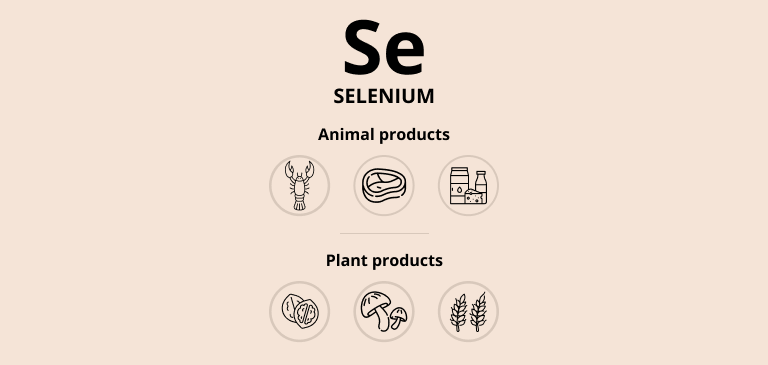Selenium
Year of discovery: 1817 | Jöns Jacob Berzelius
Selenium is one of the antioxidant nutrients for the human body, protecting the body from oxidative stress. Oxidative stress is a natural byproduct of metabolism in the body. Selenium also regulates thyroid hormones and vitamin C oxidative reduction reactions. Selenium, together with vitamin E, reduces the amount of free radicals that are generated in cellular processes.
Main sources of selenium
Selenium is present in seafood, meat, whole grains, dairy products, fruits and vegetables. The selenium content of plant foods varies depending on the selenium content of the soil. Foods of animal origin are a reliable source of selenium, as animals require selenium in their diet and it is added to feed.
Bioavailability of selenium
Selenium from food is highly bioavailable.
Risks associated with insufficient or excessive selenium intake
Overt selenium deficiency is very rare. Some diseases endemic in parts of Russia and China, such as Keshan and Kashin-Beck disease, are associated with low selenium intake. People at risk of low selenium intake are vegans who eat only foods grown in areas low in selenium. Selenium in high amounts is toxic and causes hair and nail loss and brittleness, the characteristic garlic smell and nervous system disorders.



